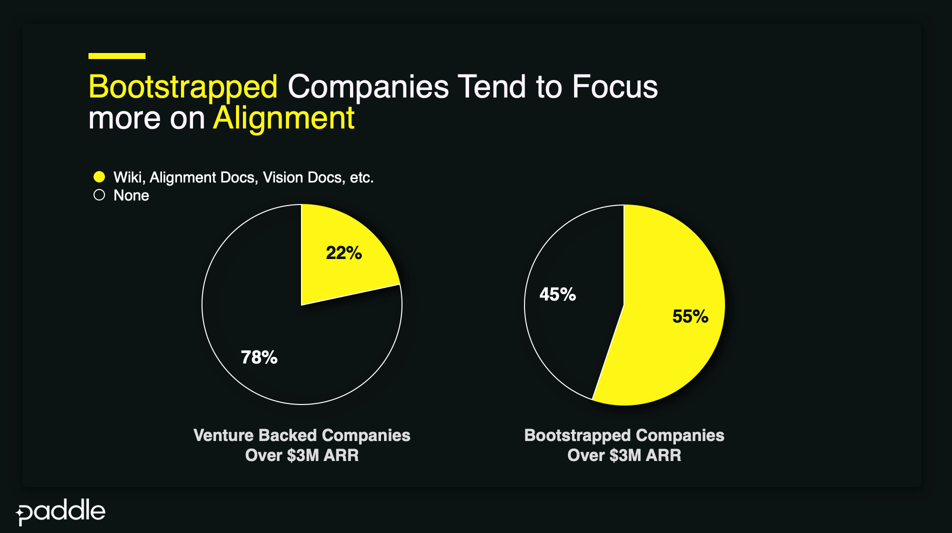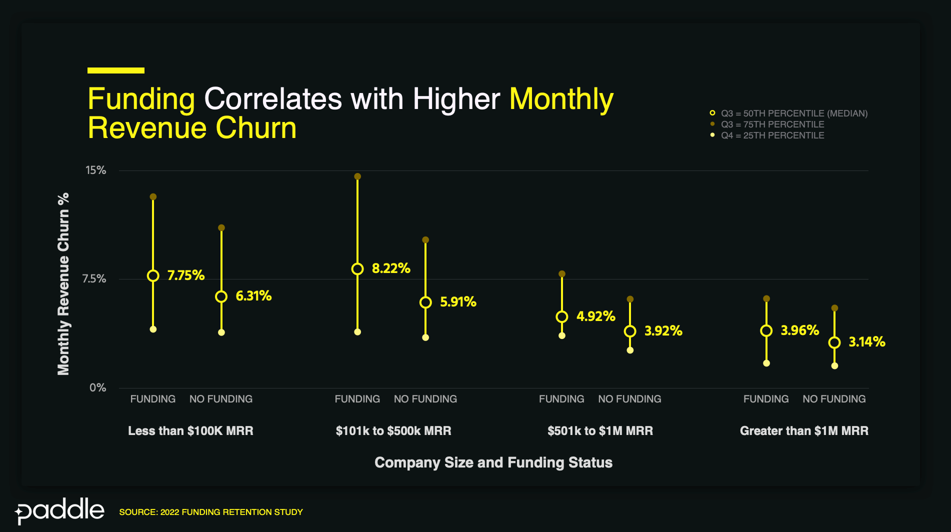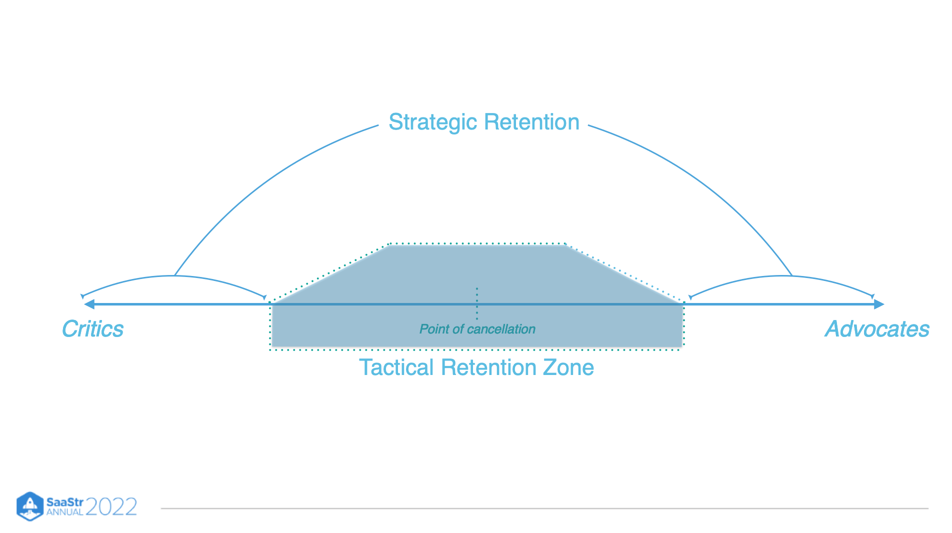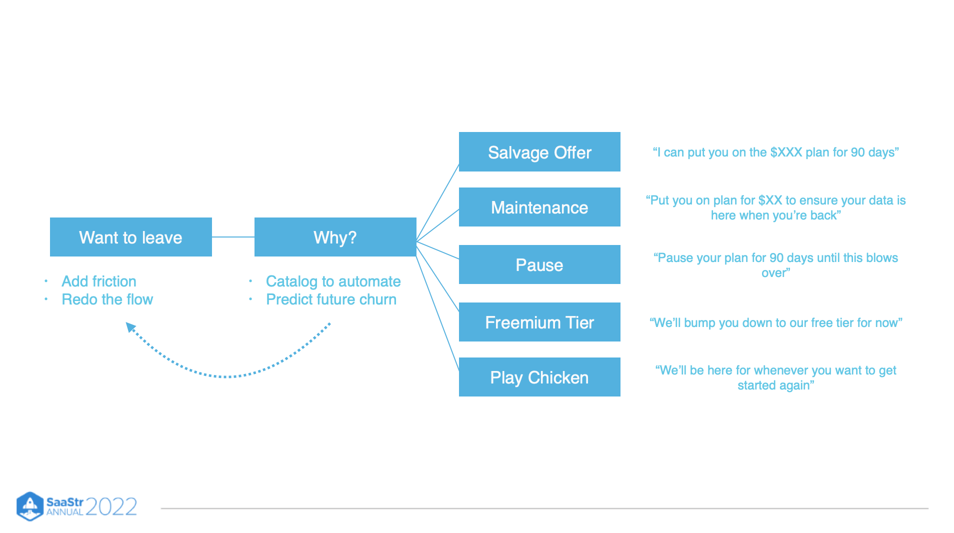Startups often begin with a bootstrapping phase with little to no outside investment. Many, however, will eventually switch to the externally funded phase because bootstrapping isn’t for every business. Some startups need constant cash infusions to achieve growth. Yet, funded startups can learn a lot from the bootstrapped ones to grow smoothly and generate revenue.
Paddle’s Senior Product Manager, Allissa Chan, and Chief Strategy Officer, Patrick Campbell, share their experience of scaling a bootstrapped startup. Allissa and Patrick believe that SaaS founders—bootstrapped or not—can pull six key levers to significantly impact their businesses.

Lever #1: Tactical retention
Hooking in new customers is exciting, but customer retention is where your business will make money. In SaaS, retention is usually driven by recurring revenue, cross-selling, and up-selling. This is where SaaS companies generate most their revenue. The fact is that bootstrapped companies are better at retention.
Your customers fall into one of two categories: advocates who love your product or critics who write bad reviews about your product. As a SaaS founder, you aim to increase the volume of customers who stick around and become loyal and decrease the volume of detractors who dislike or don’t engage with your product.

Lever #2: Plan optimization
Longer-term plans drive higher lifetime value (LTV). In SaaS, quarterly and annual plans see between 100% and 300% higher LTV than monthly plans. You should put a lot more effort into driving your customers from shorter-term monthly plans to longer-term annual or quarterly plans.
“Experiment with different plans and position the pricing as whole numbers. Instead of displaying the 10-15% discount that users will receive while signing up for an annual contract, say they’ll get $15 off or two months free.”
Short-term plans don’t involve long-term contracts, and they work best for users who need to test a product. However, when users choose longer-term subscriptions, there’s more convenience to be enjoyed—highlight that.

Lever #3: Cancellation flow
Users cancel SaaS products for different reasons: not seeing ROI on their investment, poor customer service, not seeing the value proposition, availability of a cheaper alternative in the market, lack of features, and a buggy product. No matter the cancellation reason, the key to having a solid and effective off-boarding experience stems from optimizing for two things:
- Having actionable insights into why people are leaving
- Understanding how you can optimize the salvage offers and opportunities
As soon as someone clicks on a cancellation button, you only have 18-30 seconds to learn why they leave. Feedback collection is the focus here to prevent future churn. Remember, your cancellation flow should strive to offer customers full control over deciding whether to unsubscribe.
“Make off-boarding simple and straightforward, enabling users to cancel within the app directly without your support team’s help.”

Lever #4: The nostalgia effect
Some customer churn is unavoidable. However, you can draw helpful lessons from every user who leaves. But rather than jumping straight to cancellation, ask off-boarding users about what they like about your product. This nostalgia effect fosters positive feelings with the users who are about to leave and connects your product with positive concepts.
You may not keep some users from leaving, yet knowing what parts of your product are satisfying customers will come in handy. Make sure to expand on those attributes in future product iterations.
Lever #5: Monetization
Pricing is another vital lever in your business. But how do companies constantly reevaluate their pricing? Venture capital-backed companies update their pricing once every 2.8 years, whereas bootstrapped companies make minor tweaks to their pricing once every 1.6 years.
The more often you iterate or change something with your pricing, the earlier you’ll get your pricing right. Look at your pricing the same way as other business functions since it is the most prominent leverage on your bottom line.

Lever #6: Price localization
Price localization describes pricing that differs for each region you’re selling in. Competitive pricing is essential to succeeding in a global market, but your customers have different levels of willingness to pay. Adjusting your payment methods and currencies will bring you some gains.
“Price localization can raise revenue in regions of low competition by charging as per customer needs and whether they can easily purchase the same product elsewhere in their region.”
Used strategically, localized pricing can help SaaS businesses expand their customer base and boost conversions, accelerating business development.
What can you learn from the most cash-constrained SaaS companies?
Documentation is one of startup experts’ most common pieces of advice, but only 22% of VC-backed companies use an internal documentation system. On the other hand, bootstrapped companies (55%) tend to focus on alignment and documentation more than VC-backed businesses.
Don’t consider the documentation as a checkbox to tick once the key business functions are performing well because it can be a make-or-break competency within your business. Getting documentation correct leads you to another important area—mission. A mission statement outlines a company’s objectives and its position in the industry for its customers, rivals, and other stakeholders.
If you want to implement one thing learned from bootstrapped startups, make it the dedication towards documentation and your mission—and then move ahead to the SaaS growth levers.
The post What Bootstrapped Companies Do Better than VC-Backed Ones with Paddle Chief Strategy Officer Patrick Campbell and Senior Product Manager Allissa Chan (Video) appeared first on SaaStr.
via https://www.aiupnow.com
Amelia Ibarra, Khareem Sudlow
